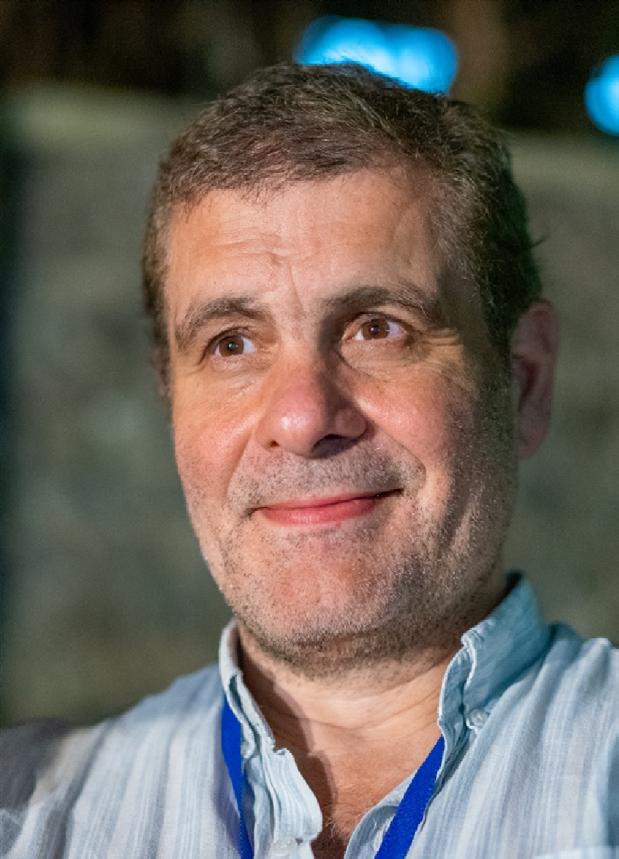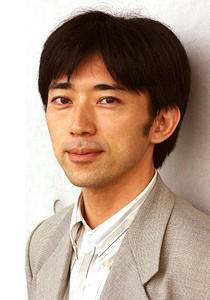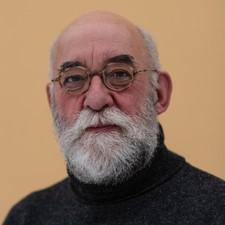
5 minute read
COSPAR Community
In this section, we include profiles of COSPAR personalities, principally officers, and other articles relevant to persons active in COSPAR’s affairs.
Hajime YANO—Chair, Commission-B: Space Studies of the Earth-Moon System, Planets, and Small Bodies of the Solar System.
“ He has also been appointed as the first SC-B liaison to the newly created COSPAR Inclusion, Diversity, Equity, and Accessibility (IDEA) Initiative Task Group (IITG).”
Prof. Hajime Yano is a space scientist, university professor, and professional project manager (PMP) at the Institute of Space and Astronautical Science (ISAS), Japan Aerospace Exploration Agency (JAXA). As an expert in cosmic dust studies and impact physics, his research extends to the interdisciplinary combination of exploratory, observational, experimental, analytical, and theoretical works of small bodies and ocean worlds of the Solar System, as well as planetary protection, planetary defense, and space debris. He has published more than 250 refereed papers as the first author or a co-author and contributed as the principal investigator or a co-investigator of about 20 space exploration and experiment projects from Japan, Europe, and the United States. These missions include LDEF, EuReCa, HST, SFU, Nozomi, Stardust, Hayabusa 1~2, Leonid-MAC, SSSAT, IKAROS, Tanpopo 1~4, BepiColombo, SpaceSkin, EQUULEUS, DESTINY+, Comet Interceptor, and Gateway. Through these projects, his teams have accomplished a number of pioneering works that led to major scientific discoveries and “game-changing” strategies in solar system exploration.
Hajime Yano first majored in physics at the International Christian University in Japan and in astronomy at the University of California at Berkeley in the USA and then obtained a PhD in space sciences at the University of Kent at Canterbury (UKC) in the UK in 1995. He conducted his own research and contri- buted to space missions as a JSPS postgraduate fellow at ISAS in 1995-1998 and as an NRC research associate at NASA Johnson Space Center (JSC) in 1998-1999. Since 1999, he has rejoined ISAS as an academic faculty. Back in 1994, he received a travel grant to attend his first COSPAR assembly in Hamburg, Germany. Since then, he has participated in all the COSPAR assemblies as a contributed speaker, a solicited speaker, a session chair, a scientific organizing committee member, the deputy organizer, and the main science organizer in the last 28 years. In 2010-2014, he supported Dr. Maria Teresa Capria of INAF, the Chair of the SC-B Sub-Commission-B1 on Small Bodies (SC-B1) as Vice-Chair. He was elected as the SC-B1 Chair in 2014-2021. He also became the first Asian Vice-Chair of the Panel of Planetary Protection in 20142018, while he was responsible for the planetary protection activities of JAXA’s Hayabusa2 and Procyon missions. In 2021, he was elected as one of the three Vice-Chairs of the SC-B with Prof. Bernard Foing of ESA and Dr. Rosaly Lopes of JPL, under the leadership of Dr. Capria. He has also been appointed as the first SC-B liaison to the newly created COSPAR Inclusion, Diversity, Equity, and Accessibility (IDEA) Initiative Task Group (IITG). After the unfortunate loss of Dr. Capria in the spring of 2022, Hajime Yano was elected as the new SC-B Chair in Athens and he has become the first Asian to lead the commission in the last three decades.

In the space shuttle era, Prof. Yano established post-flight analysis procedures of micrometeoroid and orbital debris impact signatures on retrieved spacecraft surfaces. Microscopic analyses of several hundred impacts per spacecraft such as LDEF, EuReCa, HST, and SFU revealed their origins and formed a fundamental database for dust environment modeling in near-Earth space. In 19982002, his team became the world’s first to use high-definition video imagery for astronomical research via airborne observation onboard the Leonid MAC mission, which yielded both the faintest influx and organic and volatile spectroscopy of the Leonid meteor storm. He also developed and operated a number of new instruments for cosmic dust detection and collection. The detectors include the Nozomi-MDC impact plasma detector, the BepiColombo-MDM and Gateway ERSA/LVDM acoustic sensors, and the PVDF detectors onboard SSSAT, IKAROS, and EQUULEUS. As all are involved in hypervelocity to low-velocity impact calibration experiments and simulations, Hajime has developed stable shotgun techniques for microparticle impacts with two-stage light gas guns at UKC, JSC, and ISAS and single shot technique with a vacuum laser abrasion accelerator at the Massachusetts Institute of Technology (MIT). The ALADDIN PVDF sensors onboard the world’s first interplanetary solar sail IKAROS deployed a 0.54 m2 detection area of dust impacts, which yielded the finest structure of the zodiacal dust between the Earth and Venus.
Also noted is a projectile-impact sampling system his team had developed for almost any unknown surface conditions of an airless solid body (Yano et al., Science, 2006). Hayabusa-1&2 missions employed the system and resulted in the world’s first asteroid sample return from 25143 Itokawa in 2010 and the second of its kind from 162173 Ryugu in 2020. Upon touch-and-go samplings on Itokawa, Hajime and his colleagues discovered evidence of granular migration on such a small body, which created a new research field of “microgravity geology” (Miyamoto,
Yano, et al., Science, 2006).
He also attempted intact capture of micrometeoroids by foil stuck, silica aerogels, and carbon nanotubes deployed on LDEF, EuReCa, Stardust, and most recently Tanpopo-1&2 in 2015-2020, which were Japan’s first astrobiology space experiment series that he served as the project manager. He is now advancing these experiences for future mission concepts like a sample return from sub-surface ocean plumes and planetary rings as well as impact ejecta from interstellar objects.
As an educator, Hajime Yano has given a number of lectures for planetary science, astronautical engineering, and project management in universities worldwide. He has supervised dozens of Master’s and PhD students and hosted international student interns in solar system science at ISAS. In addition to COSPAR, Hajime has organized numerous international scientific meetings in IAA, IAU, and ISTS and served as a referee and an editorial member for a number of international peer-reviewed journals. Currently, he is the IAA Academician and the secretary of its Space Physical Science Commission. In Japan, he has been a member of the COSPAR Sub-Committee in the Science Council of Japan since 2017 and now serves as its secretary. He has received a number of domestic and international awards as a team or individual, including SAF-Prix International d’Astronautique (Hayabusa2), IAA-Laurels (Hayabusa and IKAROS), NASA-Group Achievement Award (Hayabusa), NASA Ames-Honor Award (Leonid-MAC), and ISTS-Jaya Jayant Award (individual). In 2003, the IAU named the main belt carbonaceous (B/Cb) asteroid 1995 WF2 “8906 Yano”.
Hajime and his colleagues discovered evidence of granular migration on such a small body, which created a new research field of “microgravity geology”
Awards
PSW Vice-Chair Awarded Julius Bartels Medal
The 2023 Julius Bartels Medal is awarded to Hermann Opgenoorth, a member of the UmU space group, for his exceptional contributions to substorms and space weather research, and his strong leadership in international collaboration. The medal is given by EGU at their meeting later this spring.
He has been Professor Emeritus in the Physics Department at University of Umeå in Sweden since 2019 and has worked in many different capacities throughout his long career, including Head of the Solar Terrestrial Physics research programme at the Swedish Institute for Space Physics in Uppsala, Head of the Solar System Missions Division of ESA, and Discipline Scientist at the International Space Science Institute.
Hermann Opgenoorth is Vice-Chair of the COSPAR Panel on Space Weather (PSW) and has been an active Associate since 2002. He is also the COSPAR PSW Liaison to the United Nations.
CBW Fellowship Chair Awarded Jocelyn Bell Burnell Inspiration Medal
Congratulations to Mariano Méndez, Chair of the COSPAR Capacity Building Fellowship Programme and Alumni for being awarded the 2023 Jocelyn Bell Burnell Inspiration Medal by the European Astronomical Society for his work over decades to set up a programme of education in space science in developing countries.

This includes his work in the COSPAR Capacity Building Workshops. Professor Méndez has carried out this programme on a voluntary basis, while maintaining a highly productive scientific career.
See https://eas.unige.ch/inspiration_medal.jsp





